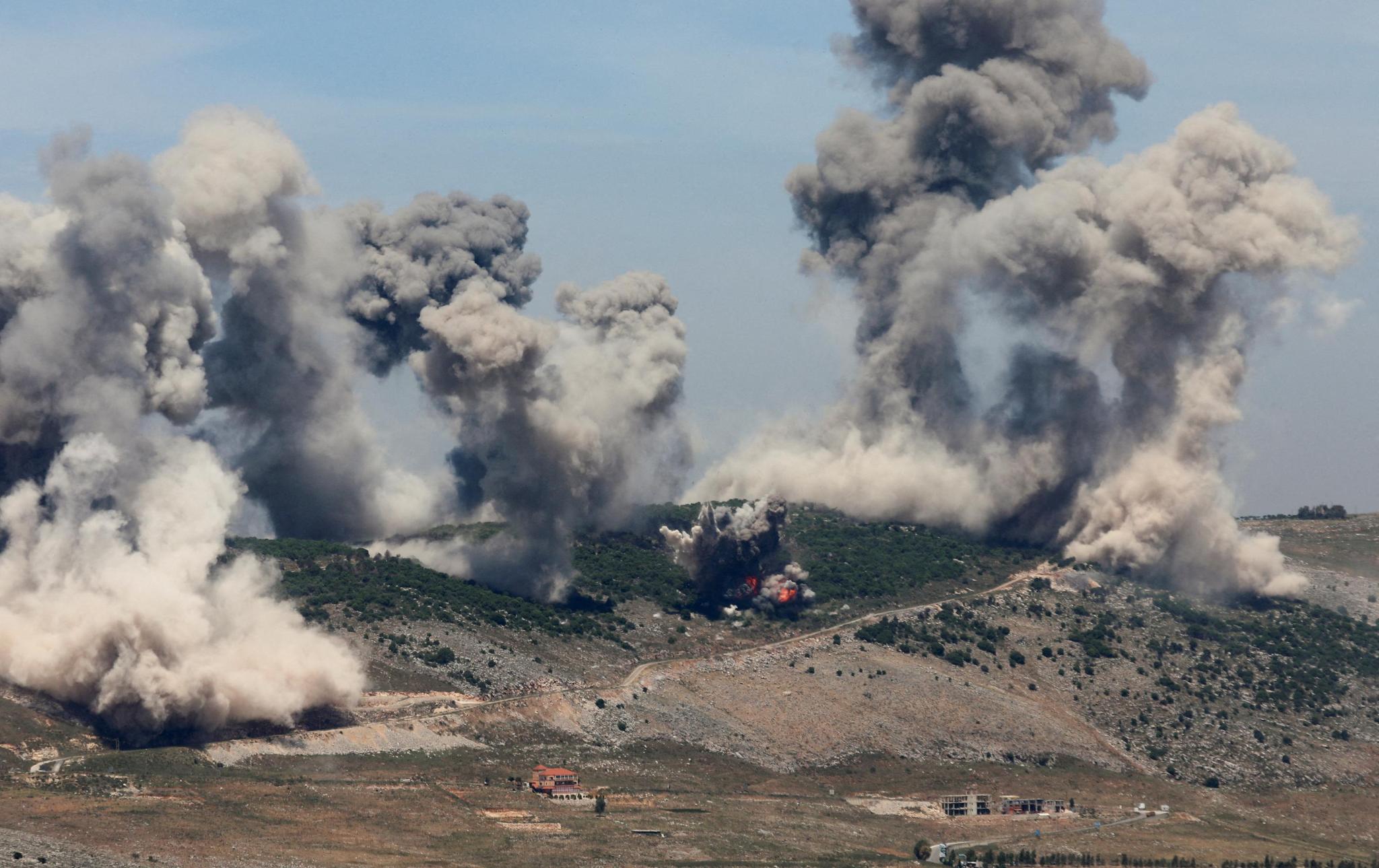Israeli airstrikes against southern Lebanon continued Thursday, with multiple strikes against the outskirts of the town of Nabatieh. The Israeli government claimed that the attacks targeted “Hezbollah infrastructure,” though they did not clarify what that meant or provide evidence that it was the case.
While Israeli drone strikes are effectively a daily occurrence in Lebanon, this was a much larger bombing campaign, involving Israeli warplanes attacking hills on the outskirts of the town with dozens of strikes.
One person was killed and eight were wounded, according to Lebanon’s Health Ministry. There are as of yet no reports on the identities of the casualties, but there are no indications that they were associated with Hezbollah, and indeed Israeli statements only claim the hillsides as “infrastructure,” not the people themselves.

Photograph of Israeli airstrikes on the outskirts of Nabatieh | Image from Reuters
Lebanese Prime Minister Nawaf Salam condemned the Israeli strikes in a statement, saying they were a violation of the ongoing ceasefire with Lebanon, put in place November 26. Salam also called on Israel to withdraw ground troops from Lebanon, which was also required under the ceasefire.
Israel withdrew some of its troops from Lebanon back in February, but they built five military posts inside Lebanon and have maintained them ever since. They insist they have no intention of withdrawing from those sites. Israel has also expanded their holdings in southern Lebanon since then.
Though Israel often presents Hezbollah as violating the ceasefire by their very presence, the ceasefire only requires Hezbollah to relocate north of the Litani River. Hezbollah has handed over the overwhelming majority of the Lebanese military, which has dismantled most of them.
Today’s attack would also not fit into the ceasefire violation claims from Israel, as Nabatieh is actually north of the Litani River so even if these sites did belong to Hezbollah it would not be a violation by virtue of existing. Israeli airstrikes, however, are plainly contrary to the terms of the ceasefire.


